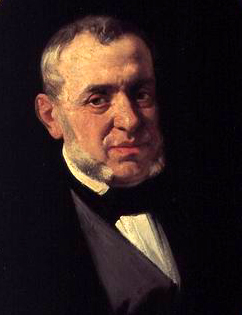Act 1
Scene 1: Inside Count Arnoldo's villa
The Marquis Tricotazio and his daughter Silvia have arrived to visit the Count a day earlier than expected. The Marquis is looking forward to Silvia's marriage with the Count's son Claudio, but Silvia is in love with Celso, a former fellow-student of Claudio who has joined the Marquis's retinue. The Count suspects that Claudio wishes to marry someone else, and has confined him to his room for a year, but Claudio, to the Count's surprise, agrees to the marriage. This is a ruse which allows him to move more freely and, in particular, to visit Elisa, whom he has secretly married. However, the Count's servant, Luca, has discovered the existence of Elisa and the two children that she has borne to Claudio.
Scene 2: Carlotta's cottage
Elisa and the children are staying with her friend Carlotta. She is longing to be reunited with Claudio. Carlotta arrives, indignant that Claudio is apparently to marry Silvia. Claudio appears and is reproached by the women, but he convinces them that his consent to the marriage is a pretence. After he has left, Luca and a gang of ruffians arrive and carry off the children, to the great distress of Elisa and Carlotta.
Scene 3: The gallery in the Count's villa
Silvia and Celso plan to elope, but suddenly Claudio and Carlotta arrive with the news that the children have been kidnapped. The Marquis appears, but gets angry when no-one tells him what is going on. The arrival of Luca and the servants does not improve his temper.
Scene 4: The Count's garden
The bewildered Marquis is taking the air when he is confronted by a furious Elisa, who accuses him of ordering the kidnapping. He has no idea who she is or what she is talking about, and, assuming her to be mad, rushes off, pursued by Elisa. Carlotta arrives, distressed because she has been unable to find Elisa, but the servants cannot help.
Scene 5: Inside the villa
Luca and the Count are discussing what to do with the children when the Marquis, still pursued by Elisa, arrives. Silvia, Claudio, Carlotta and Celso now appear, and when the Count orders the servants to throw Elisa out, she realises that he, and not the Marquis, is her enemy. The others plead with the Count, but he is adamant.
Act 2
Scene 1: The Count's garden
Luca refuses to tell the servants exactly what is going on and sends them away. The Count reveals that he plans to offer Elisa a dowry if she finds someone to marry. The Marquis tries to persuade the Count to abandon the marriage of Silvia and Claudio, but the Count will not listen. Celso tells Silvia and Carlotta that he has acquired a key to a secret door through which Elisa and Claudio can escape. He has also had an idea about how to find where the children are being kept. Carlotta reflects that love has its sorrows as well as its enchantments.
Scene 2: Inside the villa
The Count tries to persuade Elisa to accept the dowry and the husband that he has selected for her. She rejects both. Celso, who had put his own name forward to the Count, offers Luca a share of the dowry if he will reveal the children's whereabouts. Luca has no hesitation in accepting.
Scene 3: Night-time in the garden
Elisa, Claudio and Carlotta have escaped through the secret door. They encounter the Marquis and then the Count, who has Luca's armed ruffians with him. The Count and Claudio shout at each other until he gives the order for Elisa to be taken away and locked up. After a scene of general confusion, Claudio meets Celso, who has freed the two children, and they hymn the power of friendship.
Scene 4: A room in the villa
Elisa is visited in her prison by Claudio and the children, and is overjoyed at their reunion. Celso, Carlotta and the Marquis join the rejoicing. The Count, still furious, is not impressed by Elisa's pleading with him, nor with the Marquis's support for her. The Marquis is disconcerted to find that Silvia is in love with Celso, a servant, but recovers and agrees to their union. Elisa offers to renounce her claim to Claudio if the Count will forgive his son, and finally the Count gives way and accepts their marriage, to general rejoicing. [4]

